Eriobotrya japonica (Thunb.) Lindl. |
| |
|
|
Botanical Name |
: |
Eriobotrya japonica (Thunb.) Lindl. |
English
Name |
: |
Japanese plum |
Synonym(s) |
: |
Mespilus japonicus Thunb., Mespilus japonica Thunb., Crataegus bibas Lour. |
Family |
: |
Rosaceae |
| |
General Info
| Description |
 |
|
It is an ornamental tree. The plant grows to a height of 7m. Thestems are woolly at the apex and 5mm in diameter. The leaves are simple, spiral, and stipulate. The stipule is bifid and 7mm long. The petiole is stout and short. The blade is glossy, serrate, 12.5cm × 5cm – 30cm × 10cm, dark green above, spathulate, glabrous above and woolly below, showing 15 pairs of secondary nerves. The inflorescences are terminal,7cm long, and the panicle is golden yellow. The fruits are 2.5cm long, velvety, and golden yellow, globose, or obovate, and 1–1.5cm in diameter. |
| Herb Effects |
 |
|
Sedative (fruit); expectorant and insect repellent (flowers); astringent, antitussive and antidiarrheic (leaves) |
Chemistry
| Active Ingredients |
 |
|
Amygdalin, benzaldehyde, citric acid, malic acid, oleanolic acid, ursolic acid (leaves); ascorbic acid, beta-carotene, cryptoxanthin, niacin, riboflavin, succinic acid, tannin, thiamin (fruits); caffeic acid, kaempferol, quercetin (plant); linoleic acid, oleic acid, palmitic acid (seed). |
| Chemistry
of Active Ingredients |
 |
|
|
 |
Name |
CAS# |
IUPAC Name |
Formula |
Structure |
 |
|
| Amygdalin |
672-72-0 |
2-phenyl-2-[3,4,5-tr
ihydroxy-6-[[3,4,5-t
rihydroxy-6-(hydroxy
methyl)oxa
n-2-yl]o
xymethyl]oxan-2-yl]o
xy-acetonitrile |
C20H27NO11 |
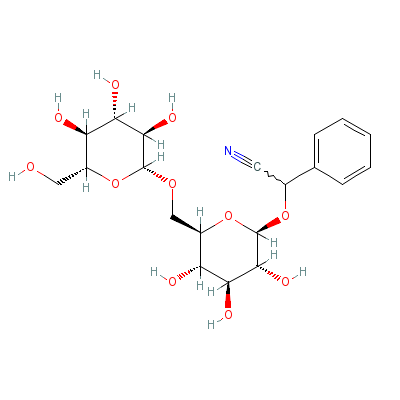
|
| Benzaldehyde |
100-52-7 |
benzaldehyde |
C7H6O |
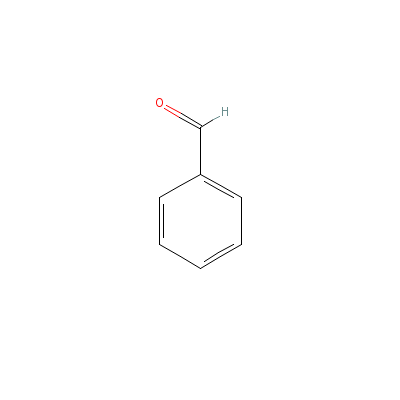
|
| Citric acid |
Not Available |
2-hydroxypropane-1,2
,3-tricarboxylic
acid |
C6H8O7 |
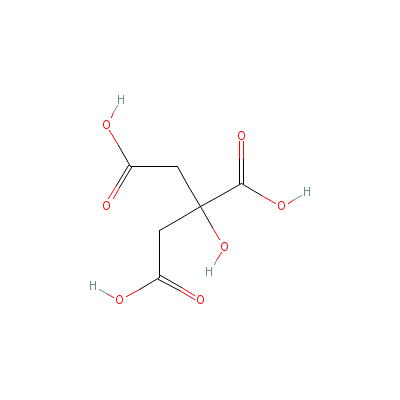
|
| Malic acid |
Not Available |
2-hydroxybutanedioic
acid |
C4H6O5 |
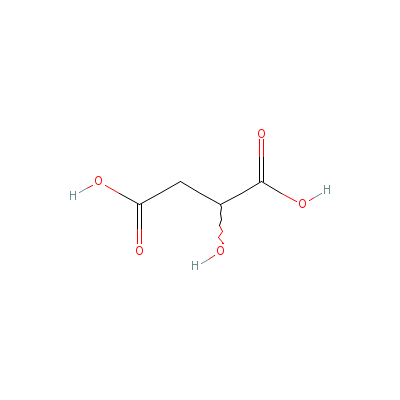
|
| Oleanolic acid |
508-02-1 |
10-hydroxy-2,2,6a,6b
,9,9,12a-heptamethyl
-1,3,4,5,6,6a,7,8,8a
,10,11,12,
13,14b-t
etradecahydropicene-
4a-carboxylic acid |
C30H48O3 |
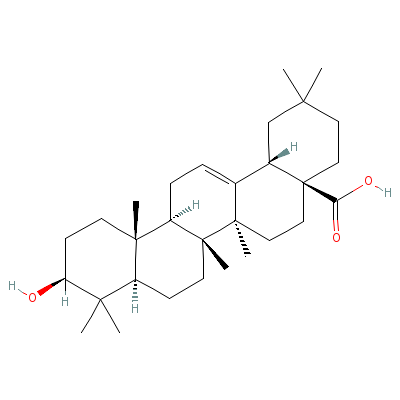
|
| Ursolic acid |
77-52-1 |
10-hydroxy-1,2,6a,6b
,9,9,12a-heptamethyl
-2,3,4,5,6,6a,7,8,8a
,10,11,12, |
C30H48O3 |
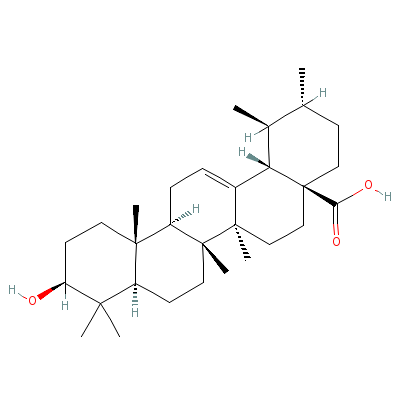
|
| Ascorbic Acid |
Not Available |
2-(1,2-dihydroxyethy
l)-4,5-dihydroxy-fur
an-3-one |
C6H8O6 |

|
| Beta Carotene |
7235-40-7 |
3,7,12,16-tetramethy
l-1,18-bis(2,6,6-tri
methyl-1-cyclohexeny
l)-octadec
a-1,3,5,
7,9,11,13,15,17-nona
ene |
C40H56 |

|
| Cryptoxanthin |
472-70-8 |
3,5,5-trimethyl-4-[3
,7,12,16-tetramethyl
-18-(2,6,6-trimethyl
-1-cyclohe
xenyl)-o
ctadeca-1,3,5,7,9,11
,13,15,17-nonaenyl]-
cyclohex-3-en-1-ol |
C40H56O |
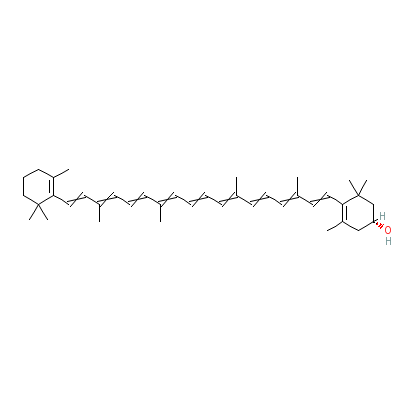
|
| Niacin |
99148-57-9 |
Pyridine-3-carboxyli
c acid |
C6H5NO2 |
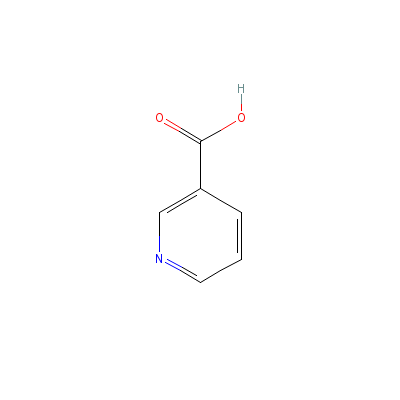
|
| Riboflavin |
Not Available |
Not Available |
C17H21N4O9P |
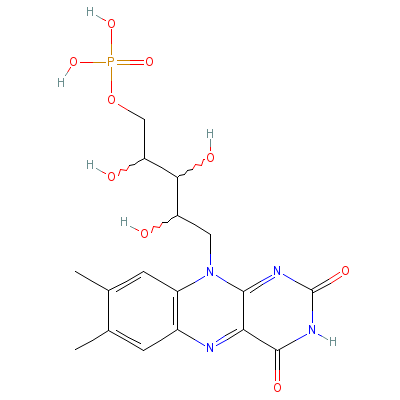
|
| Succinic acid |
6283-68-7 |
butanedioic acid |
C4H6O4 |
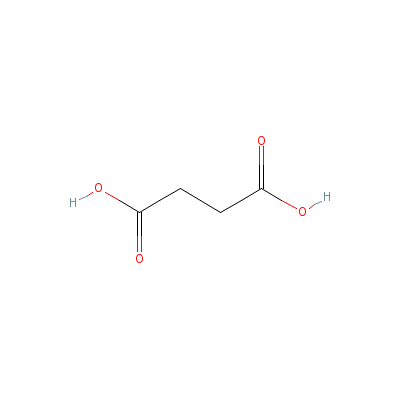
|
| Tannin |
1401-55-4 |
Not Available |
C27H22O18 |
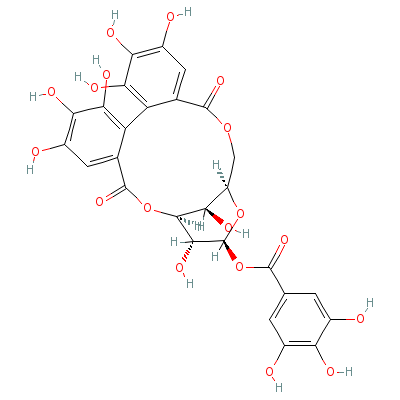
|
| Thiamin |
59-43-8 |
2-[3-[(4-amino-2-met
hyl-pyrimidin-5-yl)m
ethyl]-4-methyl-1-th
ia-3-azoni
acyclope
nta-2,4-dien-5-yl]et
hanol |
C12H17N4OS+ |

|
| Caffeic acid |
Not Available |
3-(3,4-dihydroxyphen
yl)prop-2-enoic acid |
C9H8O4 |
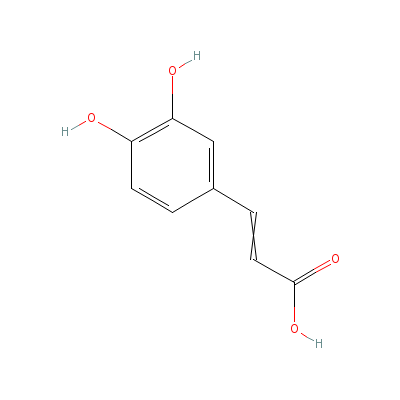
|
| Kaempferol |
80714-53-0 |
3-[3-[4,5-dihydroxy-
6-(hydroxymethyl)-3-
[3,4,5-trihydroxy-6-
(hydroxyme
thyl)oxan-2-yl]oxy-o
xan-2-yl]oxy-4,5-dih
ydroxy-6-(hydroxymet
hyl)oxan-2
-yl]oxy-4,5-dihydrox
y-2-(4-hydroxyphenyl
)-chromen-7-one |
C33H40O21 |
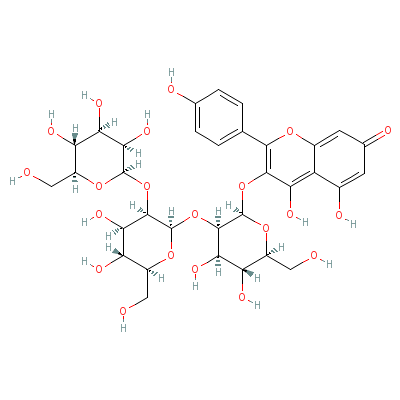
|
| Quercetin |
Not Available |
2-(3,4-dihydroxyphen
yl)-3,4,5-trihydroxy
-chromen-7-one |
C15H10O7 |
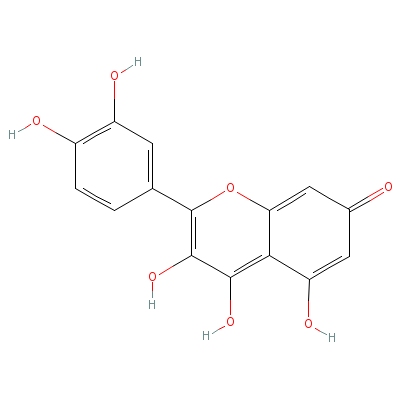
|
| Linoleic acid |
8024-22-4 |
Octadeca-9,12-dienoi
c acid |
C18H32O2 |
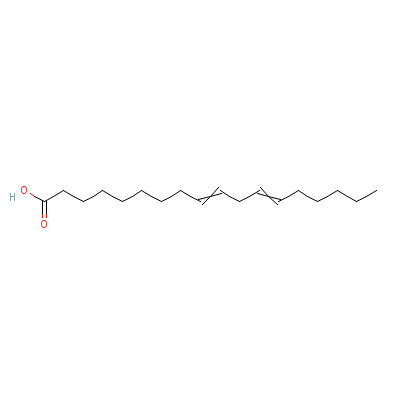
|
| Oleic acid |
8046-01-3 |
octadec-9-enoic acid |
C18H34O2 |
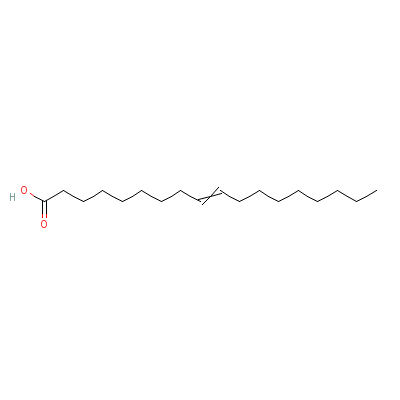
|
| Palmitic acid |
66321-94-6 |
Hexadecanoic acid |
C16H32O2 |
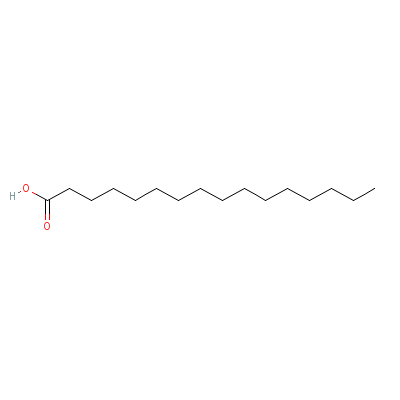
|
|
Pharmacology
| Medicinal Use |
 |
|
Used to treat bronchitis, cough, fever, and nausea (leaves); is used as a drink to fight nausea and to stop vomiting (juice of bark); to quench excessive thirst (fruit) |
| Reference |
 |
|
 Christophe Wiart. Medicinal Plants of Asia and the Pacific, P:124-125, CRC Press, June 2006. Christophe Wiart. Medicinal Plants of Asia and the Pacific, P:124-125, CRC Press, June 2006.
|
Dealers
Products
|
|